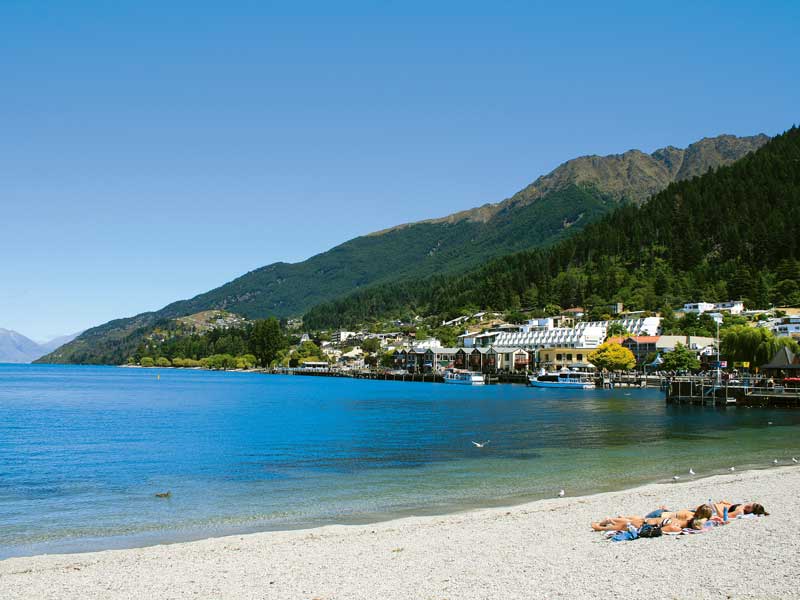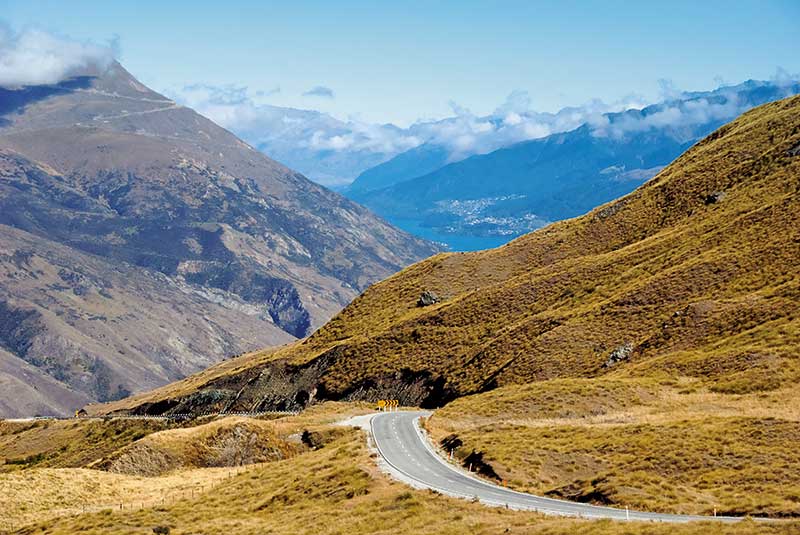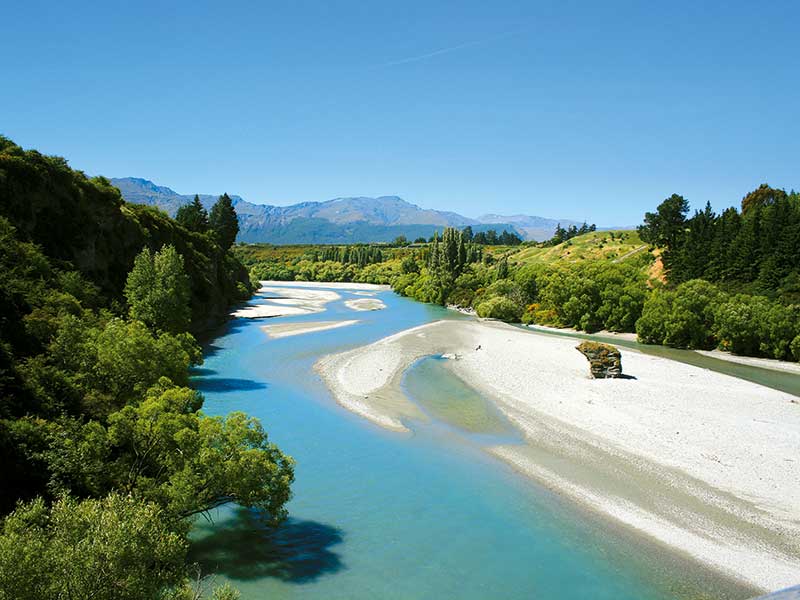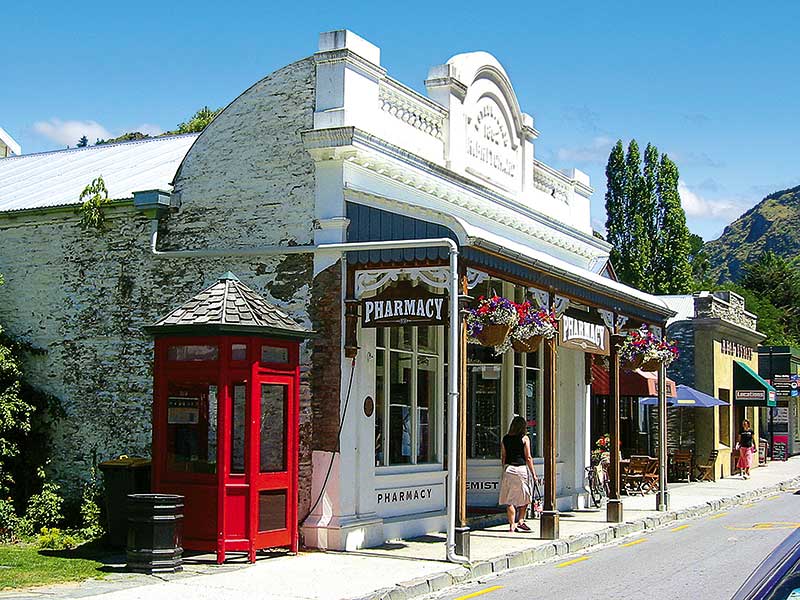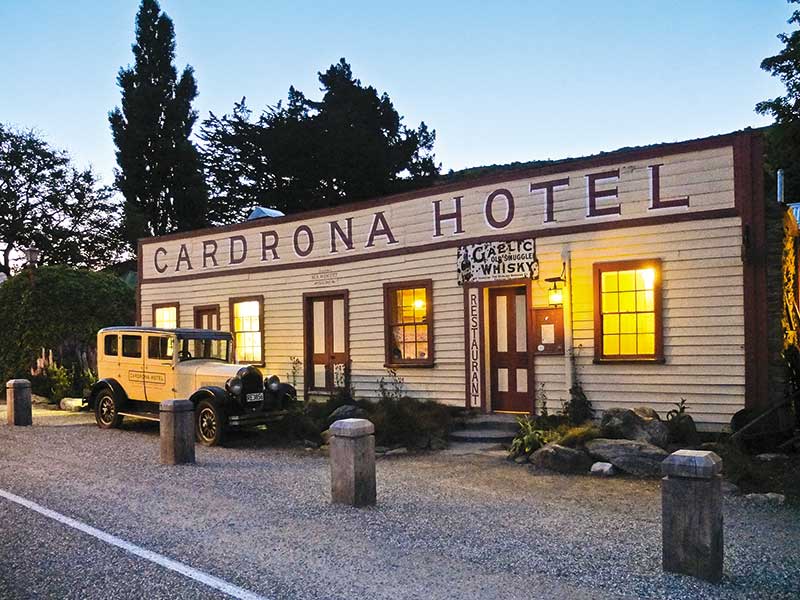Queenstown to Arrowtown
Queenstown, on the lip of Lake Wakatipu, is Otago’s good-time town. Even though the demand for more hotels and bars is forever stretching its boundaries, development could never overwhelm its bold alpine environment. The Queenstown of today is as cosmopolitan as it was in the 1860s when it was the base for the thousands of gold diggers that swarmed through the region. These days visitors pour in to reach the ski fields on the Remarkables, Cardrona, and Coronet Peak in winter, and in summer for the walks, tramps, rock climbing, and extreme adventures. Setting itself up as the ‘adventure capital’ of New Zealand, Queenstown’s greatest attraction is for the young and still-wanna-be-young sets who play hard and party hard. Despite this, the slow-downers still find it easy to become immersed in the magnificent and ever-changing environment, to find the quieter corners, the calmer pursuits, and dine among the vines that now carpet the valleys and lower slopes. Around the town and all through the nearby Gibbston Valley there are 75 wineries and although there is a good range of varieties, it is pinot noirs that are of particular note. Where there are good wines there are, of course, many good restaurants. One of the best “quieter corners” is undoubtedly the little frontier town at the tip of Lake Wakatipu which, compared to Queenstown, its boisterous neighbour 48km away, has seen minimal development. Glenorchy also happens to be in one of the most knock-out environments in the country, squatting as it does between the mercurial waters of Lake Wakatipu and the estuaries of the Dart and Rees Rivers, and surrounded by the icy and ramparts that dominate the wider landscape. The town calls itself the ‘gateway to Paradise’, which is more literal than it might sound, as a few kilometres north is an area of rivers, valleys and beguiling beech forests which has been called exactly that – apparently after a duck. It is also a gateway to Mount Aspiring National Park, and a jump-off point for two of the South Island’s most famous tramping tracks – the Routeburn and the Greenstone. And so, although small, Glenorchy has never been overlooked. Its astonishing environment means it is sought after by tourists and by movie makes who use its dramatic backdrops for films, most famously Lord of the Rings. Across the lake from Glenorchy is the even more remote spot of Kinloch, where there is little more than a wilderness lodge and a DOC campground right on the lake. Drive 20 minutes north-east of Queenstown and five kilometres off SH6, and you’ll find the large but equally delightful township of Arrowtown crouching in the shadow of high alpine peaks on the banks of the Arrow River. After William Fox struck gold nearby in 1862, the settlement quickly became a ‘gold town’, a raucous and unruly supply depot and collecting point for up to 2000 miners. Now the town’s folk have discovered gold in the visitors who come in hundreds and thousands to wander the boutiques, markets and galleries of Buckingham Street, to admire the tiny miners cottages and 19th century buildings set among rows of sycamore trees, and walk or cycle the many tracks that start or finish in the town.Arrowtown and surrounds
Even if you go there just to soak up the good life in the bars and cafés, it’s hard to ignore life in Arrowtown as it once was. In Buckingham Street, in a former bank building, is The Lakes District Museum that gives an authentic picture of early Maori habitation and the primitive circumstances of early settlers and miners. To get a better feel for a miner’s lot, you can hire a gold pan and try you luck in the river. Also down by the river is the restored and interpreted Chinese Settlement, when life for these miners (circa 1870s) was very tough indeed and social life centred around the still-intact Ah Lum’s store. Fifteen kilometres along a rough, nerve-racking 4x4 track, which follows the Arrow River and fords it 25 times, is Macetown. Except for the reconstructed bakery building, the ‘town’ is pretty well gone – just a few crumbled walls and chimneys. But you are informed you have arrived by a small stone cairn that marks the site. From Arrowtown or Queenstown, SH6 can take you through the Kawerau Gorge and Cromwell or the turnoff to the spectacular route over the tussock-dimpled Crown Range. Both roads lead eventually to Wanaka. The Crown Range Road is not suitable for caravans, but if you are able to drive it, the views over the Wanaka and Wakatipu basins are spectacular and 20km before you hit Wanaka is the historic, famous (and once infamous) Cardrona Hotel.

